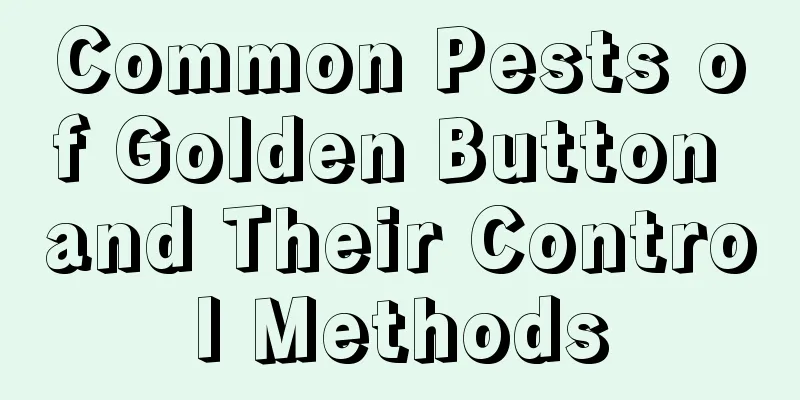Common Pests of Golden Button and Their Control Methods

Common Pests of Golden Button: Red SpiderRed spider mites are one of the most common plant pests, and they reproduce quickly, producing about 10 generations a year. Red spiders are extremely small in size. They use their piercing-sucking mouthparts to insert into the mesophyll and stem bark of plants, sucking the sap of the plants, causing the plants to turn yellow or even wither. Prevention and control methods: Spray 1500 times diluted 40% oxydemeton-methyl emulsifiable concentrate. Common Pests of Golden Button: White SpiderWhite spiders are not originally pests in our country; they are imported. Generally, imported products have strong resistance to pesticides, so it is difficult to prevent and control white spiders. However, it is difficult and you still have to be careful, otherwise, a beautiful pot of golden buttons will be ruined! Prevention and control methods: Spray with 2000 times diluted 5% cypermethrin suspension. Common Pests of Golden Button: WhitefliesSymptoms of pests: Adult and nymphs suck the juice of leaves, fruits and young branches. The affected leaves develop green yellow-white spots. As the damage worsens, the spots expand into patches, and then the whole leaf turns pale and falls early. The flavor quality of the affected fruit is reduced, and young fruits often fall off when they are severely damaged. Excreting honeydew can induce sooty mold disease. Prevention and control methods: For early stage pests, start spraying 1500 times diluted 20% cypermethrin wettable powder or 1000 times diluted 25% acaricide emulsifiable concentrate, 3000-4000 times diluted 2.5% Uranus emulsifiable concentrate, 2000-3000 times diluted 20% cypermethrin emulsifiable concentrate, 2000 times diluted, or 1500 times diluted 10% imidacloprid wettable powder when whiteflies occur sporadically. Spray once every 10 days or so, and control 2-3 times in succession. |
<<: Pests of Dichondra chinensis and their control
>>: Diseases and Pests of Purple-backed Arrowroot and Their Control
Recommend
Gloxinia flowering period and precautions
1. Temperature: Suitable temperatures can increas...
Chinese herbal medicine planting technology
With the development of traditional Chinese medic...
How to grow jade dew
1. Soil Jade dew likes cool and semi-shaded condi...
When is the best time to plant soapberry seeds?
Planting time of honeysuckle tree seeds The soapb...
Temperature for flowers to be taken out of the house in spring
1. Temperature of the exit room Generally speakin...
I went back to the countryside, picked up a sack of good things, took them home to plant flowers, and they grew like crazy!
1. Chicken manure Chicken manure is a very high-q...
What should I do if the Kalanchoe is lush but not blooming?
The Kalanchoe plant is small in size, has bright ...
How to pot chrysanthemum seedlings
Choosing potting soil for chrysanthemums To plant...
What to do if the money tree is dying in winter
Determine the cause First of all, we need to dete...
Do mulberry trees prefer shade or sun?
Do mulberry trees prefer shade or sun? Mulberry t...
Ginger's growing environment and local conditions
Ginger Growth Environment and Conditions Ginger o...
Cultivation methods and precautions of bicolor jasmine
1. Breeding methods 1. Flower soil: It is more su...
Is carbendazim harmful to the human body? How to use carbendazim?
1. Is it harmful? Carbendazim is harmful to the h...
When does summer plum blossom?
When does summer plum blossom? Summer sweetness i...
What fertilizer to use for dianthus
1. Fertilization method 1. It likes fertilizer, s...









